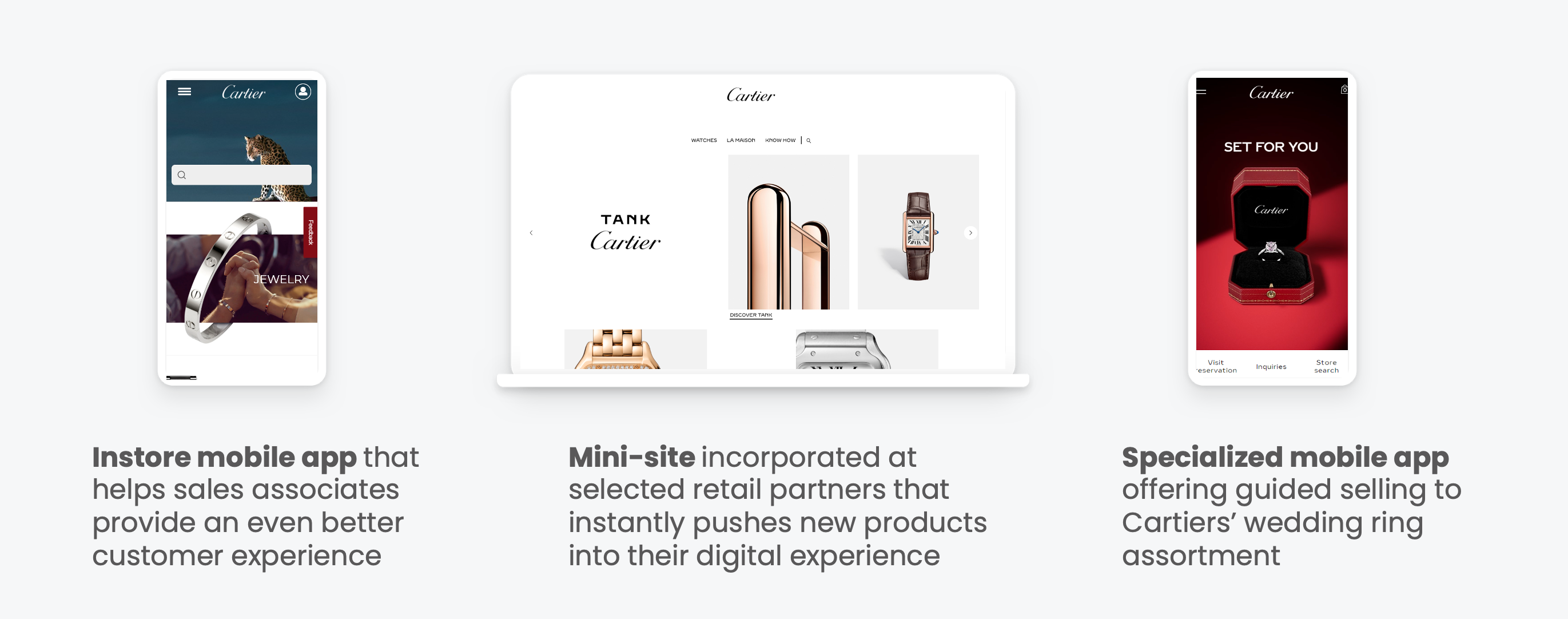Luxury brands have spent many decades building their unique position in the market, having formed deep connections with generations of customers. This is every business’s dream, but from a digital perspective – a long legacy often also means legacy technology and data that’s locked into internal system silos. This is a massive killer for digital innovation and a road block for digital teams since they cannot move at the necessary speed to meet the digital expectations of these customers. An Experience Data Platform is the tool you need to overcome these challenges.
Note: this article is written with global luxury brands in mind (e.g. Dior, Gucci, and Louis Vuitton). If you are working at that type of company, this article is especially relevant for you.
First, what is an Experience Data Platform?
An Experience Data Platform is an emerging type of software that enables digital teams to build digital experiences much faster. Using this type of software, digital teams can easily unify all their data from different systems (e.g., customer data from CRM, product data from PIM, transactional data from ERP) so they can access it instantly and deliver selected data to any frontend experience without spending months on data integration. With all data in one place, they can easily combine the data and quickly build a new digital experience fit for any channel, which is instantly available on a global scale. As you can imagine, this has many benefits, four of them being especially relevant for luxury brands.
4 ways an Experience Data Platform can support digital teams at Luxury brands
1. Digital teams become data autonomous, and creativity is unleashed as they can move faster
Data is the fuel for creating great digital customer experiences. Because of their heritage, most luxury brands sit with dated technology stacks, which means that their digital teams are often handcuffed and heavily reliant on internal or external tech resources to access the data they need to build digital experiences. This creates a lot of friction between departments, restrains innovation, and consequently, the business is not able to adapt to changes in the market fast enough.
The reality for digital teams using an Experience Data Platform is vastly different because they become data autonomous and always have access to the data they need at their fingertips. This is a massive game-changer in terms of how fast they can go from idea to deployment.
Cartier is one example of a luxury brand using an Experience Data Platform from Occtoo, and their Global Digital Operations Director, Thomas Davis, says they can now act on market opportunities quickly and don't need to execute based on plans set 24 months ago but can rather work agile and proactively in tune with the market to innovate the digital customer experience. This unleashes a lot of creativity within the team. Being this fast to market also means less risk since project costs have reduced significantly. Their capacity to test and try new concepts has increased greatly!
2. Easily reinvent how products are brought to market by accessing and combining data effortlessly
Luxury brands have many products in their assortment that have remained “classics” and “cult favorites” for decades with their consumers. They also don’t launch new products with the same frequency and volume as brands in other industries (e.g., fast fashion or affordable fashion segment). This means they constantly need to reinvent how they bring products to market and wow their customers with the experience surrounding their products rather than rely solely on new product launches to activate the market. Again, since we know data is the fuel of digital experience, the ability to instantly access and combine data to quickly execute a new digital initiative is of big value for luxury brands.
Here Cartier has work a lot with finding relevant moments for clients and creating a digital experience around that moment. An example is their Diamond/wedding ring app “Set for you”. The purchase of an engagement/wedding ring comes with many emotions - combined with an endless option of diamonds, cutting styles, quality, etc. the choice can become overwhelming. Within the app, the future bride and groom can browse through the global assortment and enjoy a guided journey that covers all the important details to think about when choosing (or creating) a wedding ring, so they can find the ring that fits their preferences the best. Building this the traditional way without an Experience Data Platform means you would need to build several integrations to access all data necessary for this experience. Each time you create a new initiative, you need to do the same thing all over again. This is especially painful for luxury brands because of their legacy technology stacks which are often harder (which becomes very expensive and time-consuming) to integrate with. With an Experience Data Platform, this is a problem of the past, and digital teams can combine and access data very easily and the task of reinventing how to bring products to market becomes much easier. Your team will spend more time and energy on creative execution instead of integration.3. Digital can easily be layered on top of the boutique experience
Luxury brands often have their own boutique network to ensure that customers get a true concierge experience that fits their unique brand proposition. To keep this more traditional experience relevant, it needs to be supported with digital tools and experiences. Again, Cartier is a great example here: they built a mobile app to empower their sales associates with product information at their fingertips. So they can move freely around the store together with the client (or even serve them remote!). With the app, they can answer any question the client might have and/or find products that might not be available at their specific store location. Prior to this, they needed to go to a desk in their store and search through a system that took ages to load (another issue with dated systems and technology). This specific app was launched as an MVP in only 30 days! With such a short time to market, it is only the imagination that holds back what type of digital innovation you can create within your store. It is easy access to data that empowers digital teams to build these experiences with speed and at scale!
 Using an Experience Data Platform from Occtoo, Cartier has quickly been able to digitalize and innovate their digital customer experience with several digital initiatives
Using an Experience Data Platform from Occtoo, Cartier has quickly been able to digitalize and innovate their digital customer experience with several digital initiatives
4. Scale digital experiences globally friction-free
Luxury brands have a global presence, and their clients are citizens of the world, meaning they often interact with the brand in many different locations. In order to offer a consistent brand experience access to global real-time data is crucial. This is often an impossible task due to dated technology stacks, and fragmented stacks using different software in different countries/continents. This means data is scattered and it is hard/impossible to scale globally.
With the use of an Experience Data Platform, you can easily unify all of this data and instantly make all data available on a global scale. All experiences that are fueled with data through an Experience Data Platform are also scaled globally in real-time. This means that real-time, seamless and friction-free experiences can be offered to clients and employees whether they are in Buenos Aires, Tokyo, or New York. Long load times simply become a thing of the past!
One thing is for sure, luxury brands have been able to stay relevant for so long because they have a unique ability to connect with their customers. Some are further ahead at also including digital as part of their unique brand experience. It is however a growing necessity to layer digital experience deeply into the overall strategy to keep the strong position among customers in the decades to come!
Want to learn more about Occtoo's Experience Data Platform? Read more here or book a demo today! Maybe you are working at an agency interested in reinventing how you build experiences for clients? Look into becoming a partner!
About Occtoo
Occtoo is an Experience Data Platform that supports retailers and brands to build relevant digital experiences and applications at rapid speed. Occtoo’s Cloud-Native platform makes it easy to access and unify enterprise data from backend systems such as CRM, ERP, PIM, etc. and combine it with behavioral and contextual data to create relevant digital experiences that can be deployed in any channel or frontend in real-time at a global scale. Occtoo was founded in 2019 and are certified by the MACH Alliance.

